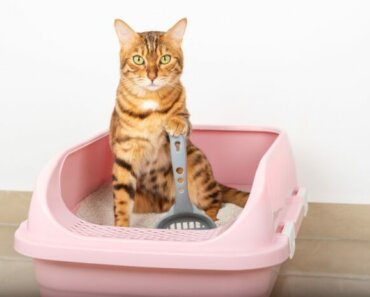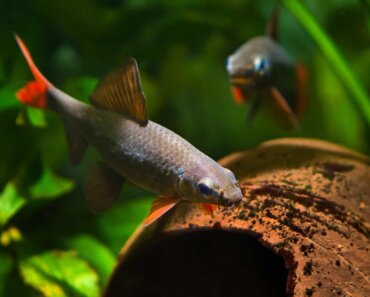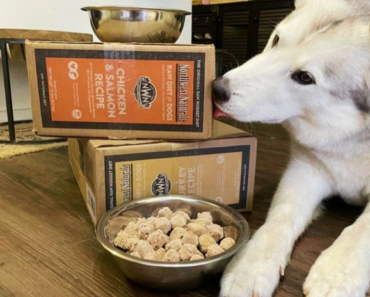A comprehensive look at when and why your animal might need to have a dental extraction.
No one wants to have to extract a dog or cat’s tooth. And the necessity for doing so can be minimized if the animal has the right anatomy and has received good dental care from the start. But there are times when a tooth is so damaged that pulling it is the only answer for better health, and to stop pain. In this article, we’ll look at why and when dental extractions are needed, and what to expect for your animal companion if he has to have a tooth removed.
When are dental extractions necessary?
 Loose teeth
Loose teeth
The obvious cases for tooth removal are when one or more of the teeth are so loose that you can wiggle them with a finger. This is caused by long-term neglect. Sometimes you see this in strays, and sometimes you see it in dogs or cats whose people treat them like furniture and give them as little care as they can give away with. But many times, loose teeth are caused by well-meaning caregivers who misunderstand the problem’s severity, or fear that anesthetics are dangerous.
All medical decisions involve balancing the pros and cons of a situation, and dental extractions are no exception. Do you leave the tooth alone? Do you use herbs? Do you use antibiotics? Do you use anesthesia? In the case of a tooth you can wiggle with your finger, the tooth has very little attachment to the gums. The tooth is usually always covered with tartar, but even if you remove the tartar, the tooth will not re-attach. Bleeding may also be involved, and some of those pets are anemic. In the very worst cases, you can actually grab the tooth with a thumb and forefinger and pull it out, in which case the tooth is definitely dead and full of infection. In these instances, you see an immediate improvement in the dog or cat’s health once the tooth is gone.
Most of the time things don’t get that far, but when people are afraid of the potential hazards of anesthetics, the problem may develop longer than it should before the tooth comes out. If you see a single tooth in your dog or cat’s mouth that is covered with tartar when none of the others are, or that looks dark gray when all the other teeth are a normal white or cream color, that tooth is in trouble, and usually dead. Often, you can wiggle it with a finger, but it is still firmly enough attached that veterinary instruments will be required to remove it. And, frankly, it would be cruel to do that without anesthetic. The good news is that if the pet is in good health, anesthetics pose minimal risk. If the tooth stays in, however, any infection around the roots will enter the bloodstream sooner or later. Bacteria in the bloodstream that gets lodged in the kidney as it filters debris from the blood can cause small localized infections. This contributes to kidney disease, which is ultimately a killer. Removing the tooth removes the problem.
It’s important to realize that when teeth are this far gone, they do not respond to mouth washes or herbal remedies. There is not enough circulation around the tooth to carry any remedy deep enough into the tissues to fix anything.
Abscesses
Sometimes, an abscess will develop deep in the root of a tooth. The top of the tooth usually looks pretty healthy, but the abscess will come to a head and usually starts draining at the bottom of the root, through the gums, or even through the skin over the abscessed area in the bone. Your veterinarian can evaluate an abscess with a thorough exam that includes x-rays studies, but the outcome will almost always be that the tooth needs to come out. An x-ray will often show an area around the bottom of the root where the bone is eroding away. When the tooth is pulled, there might be a need for some kind of drain to help all the infection drain away. You might need to flush the area with an antiseptic solution until the infection is gone, as well as administer antibiotics and/or herbal remedies to help.
 Fractures
Fractures
There are two kinds of fracture in which the tooth might need to be removed.
- One is a slab fracture of the molar, where it looks as if somebody cracked off the side surface of the tooth. This often occurs in a large dog with strong jaws when chewing on a very hard bone or on rocks. When you crack the side off, the pulp cavity is exposed. Sometimes there is a also a secondary fracture. Most of these teeth need to be removed, although some can be saved with fancy dental work. The problem for rock chewers is that they usually keep it up and break the tooth further.
- The second type of fracture is when one of the big canine teeth is broken. If it just involves the tip, there is usually no problem. If the fracture is far enough down to expose the root, the choices are a root canal (just as for people) or to pull the tooth. Keep in mind that if it’s a dog and he’s a chewer, he may crack the crown of the tooth right back off.
Big dogs often don’t display the same signs of pain that we would when a large area of tooth root is exposed (i.e. screaming!). Many dogs are stoics – they will show they are feeling pain in different ways – by not eating as much, picking up a dog biscuit with the side of the mouth, chewing only on the opposite side of the mouth, or shying away if you reach out toward the bad side (even if you only want to pet the top of his head). Cats have fewer reservations about letting you know; they often drool and may whack you with their claws if you get too close to their heads.
I have also seen fractures in which the top of the tooth comes off but there is a large crack that continues down below the gum line. Board-certified veterinary dentists might be able to help, but again, if the problem is because your dog is a rock chewer, you might see it happen again. So you have to decide whether the he is likely to undo all the work you paid for, or if it’s better to just have the tooth removed.
Cats don’t suffer from tooth fractures as often as dogs do. But they can suffered a fractured jaw if hit by a car. If the jaw heals crooked (which can happen to strays), one tooth may end up so misaligned that it starts poking a hole in the cat’s palate. Better to remove that tooth than to have a permanent hole in the roof of the mouth.
Extraction after-care – what you need to know
Dental extraction after-care depends on which tooth or teeth are pulled, and whether or not there is an infection or any stitches. In really infected mouths with lots of tartar and loose teeth, the holes will usually not be stitched up. To do so would be to wall in the infection. Although that sounds painful, these dogs or cats often start eating better almost immediately, have more energy, and start sleeping less and playing more. Any bleeding that was occurring because of infection, tartar and loose teeth will stop.
- If most of your animal’s teeth have been pulled, your veterinarian may recommend soft food until the mouth has had a few days to heal up.
- If infection is severe enough, your veterinarian may recommend an antiseptic mouthwash to syringe onto your dog or cat’s gums. You can also use calendula tea as a mouthwash.
- If a large molar was pulled, the resulting hole will often have stitches. Usually these are the slowly-dissolving type so they will not have to be removed.
- Be sure to return to your vet when she you to. It is important for her to be able to see that any infection is under control, and everything is healing up properly.
With diligent and consistent dental care, starting from an early age, chances are your dog or cat won’t need any teeth pulled. But it’s important to know when it might be necessary, and how to care for him after the dental extraction.



























